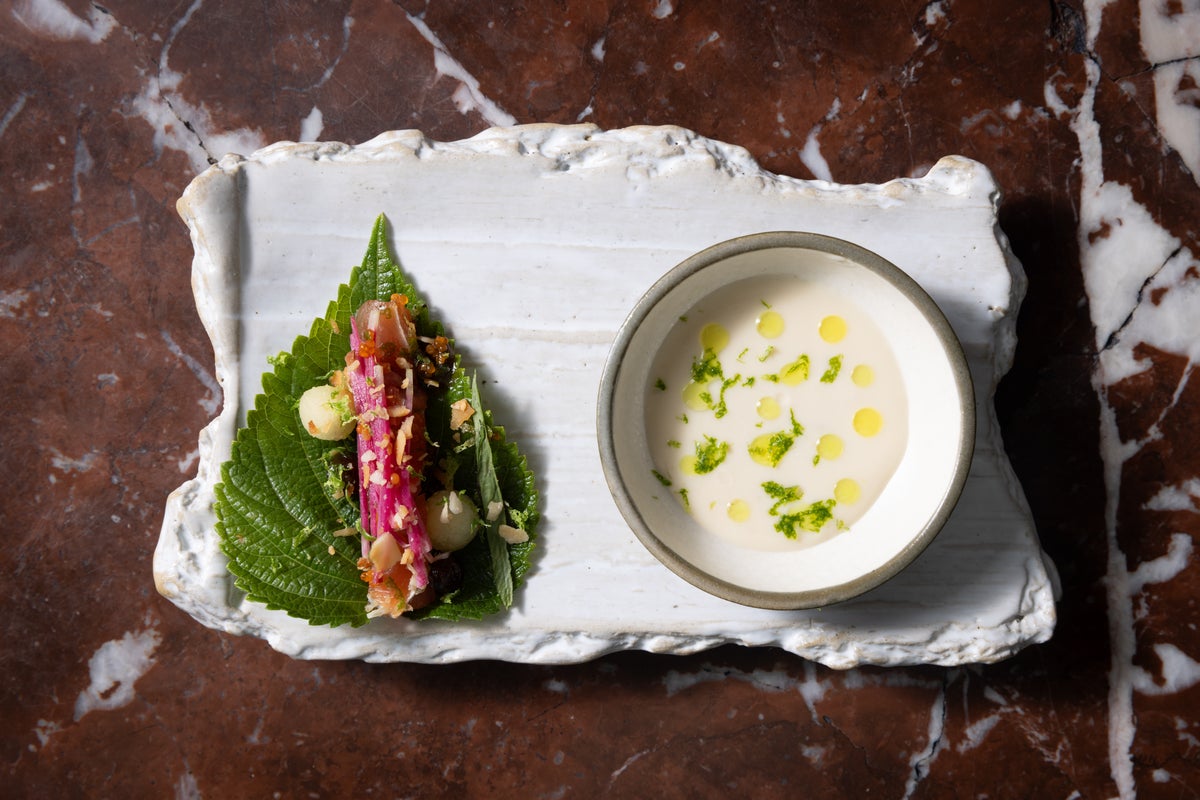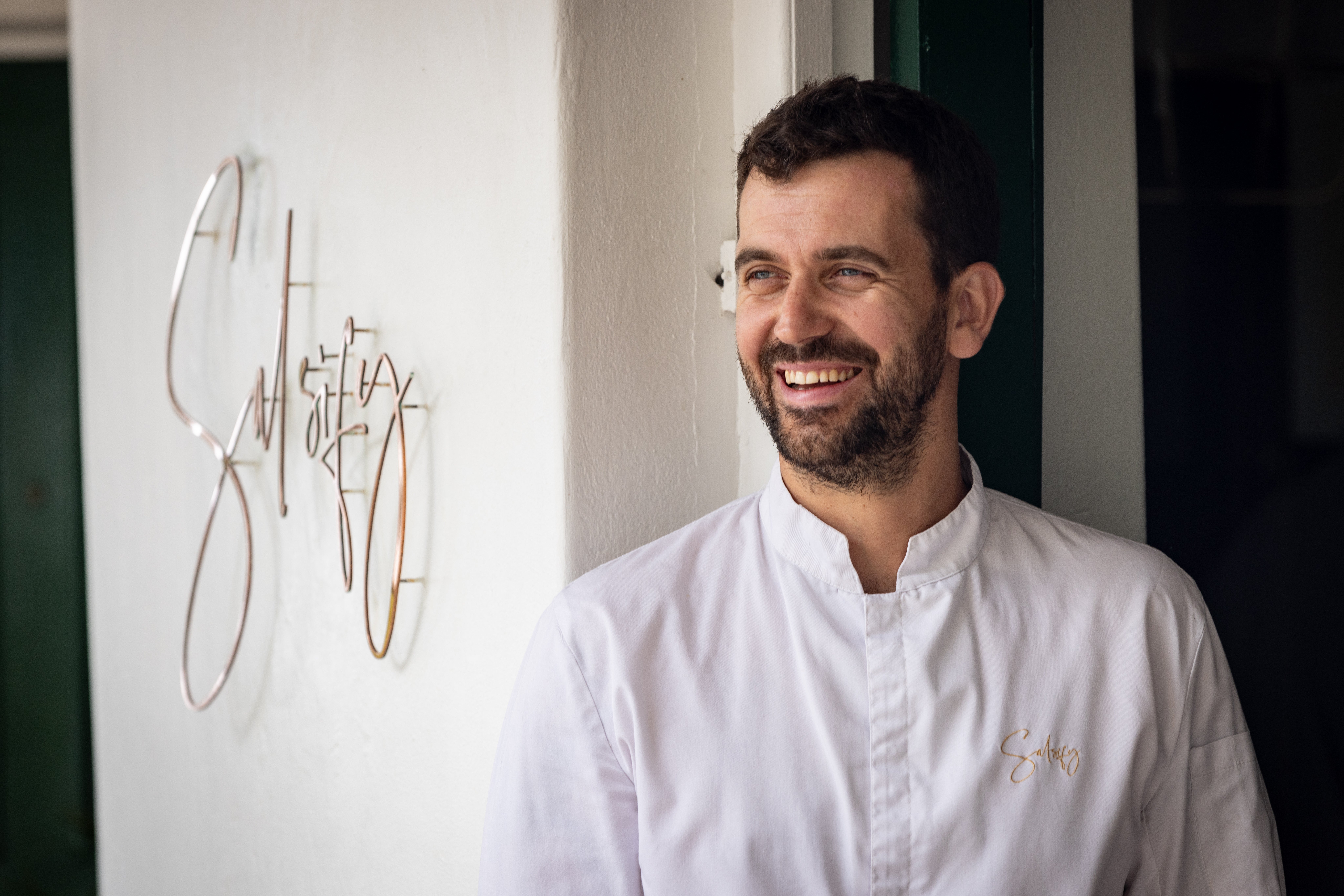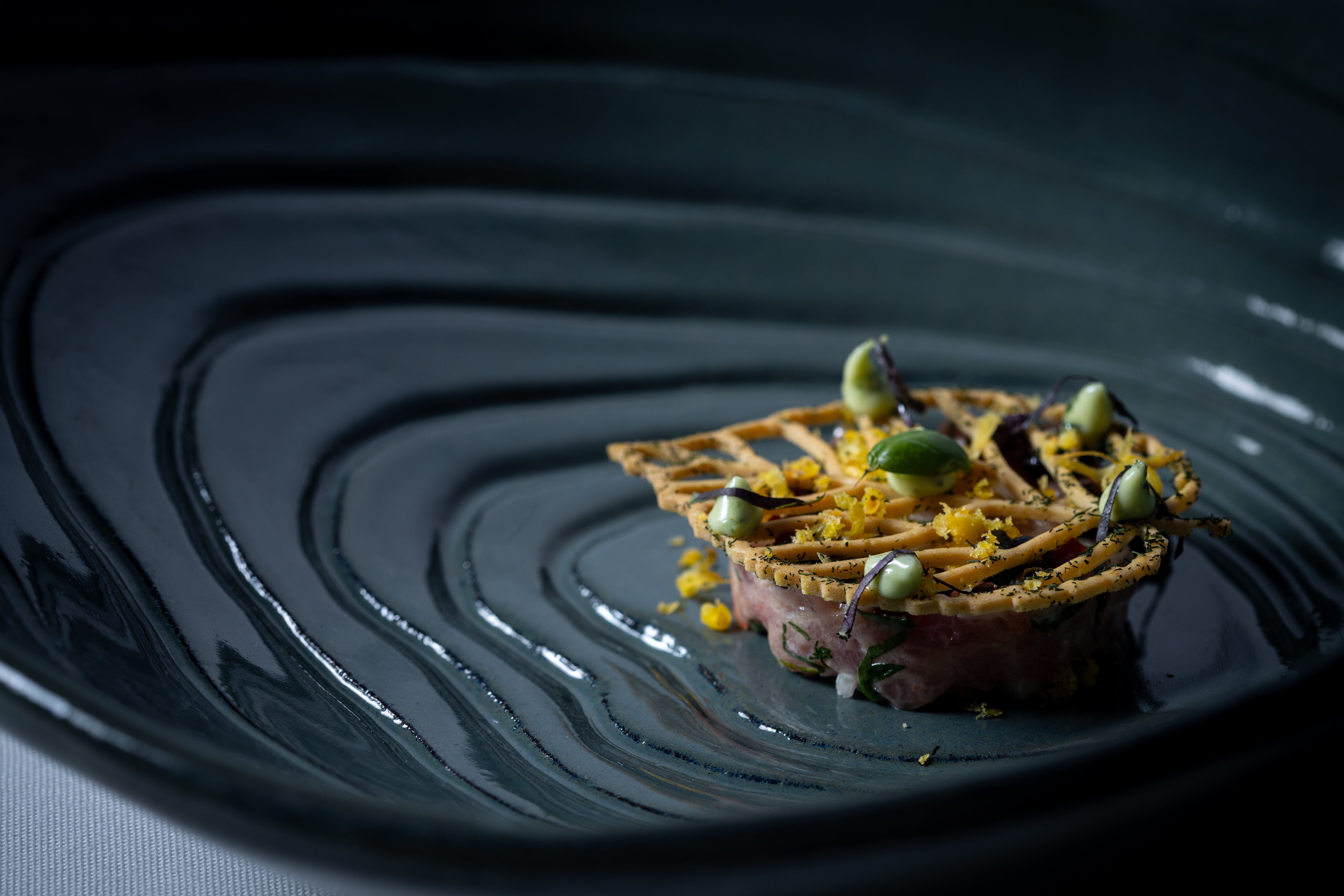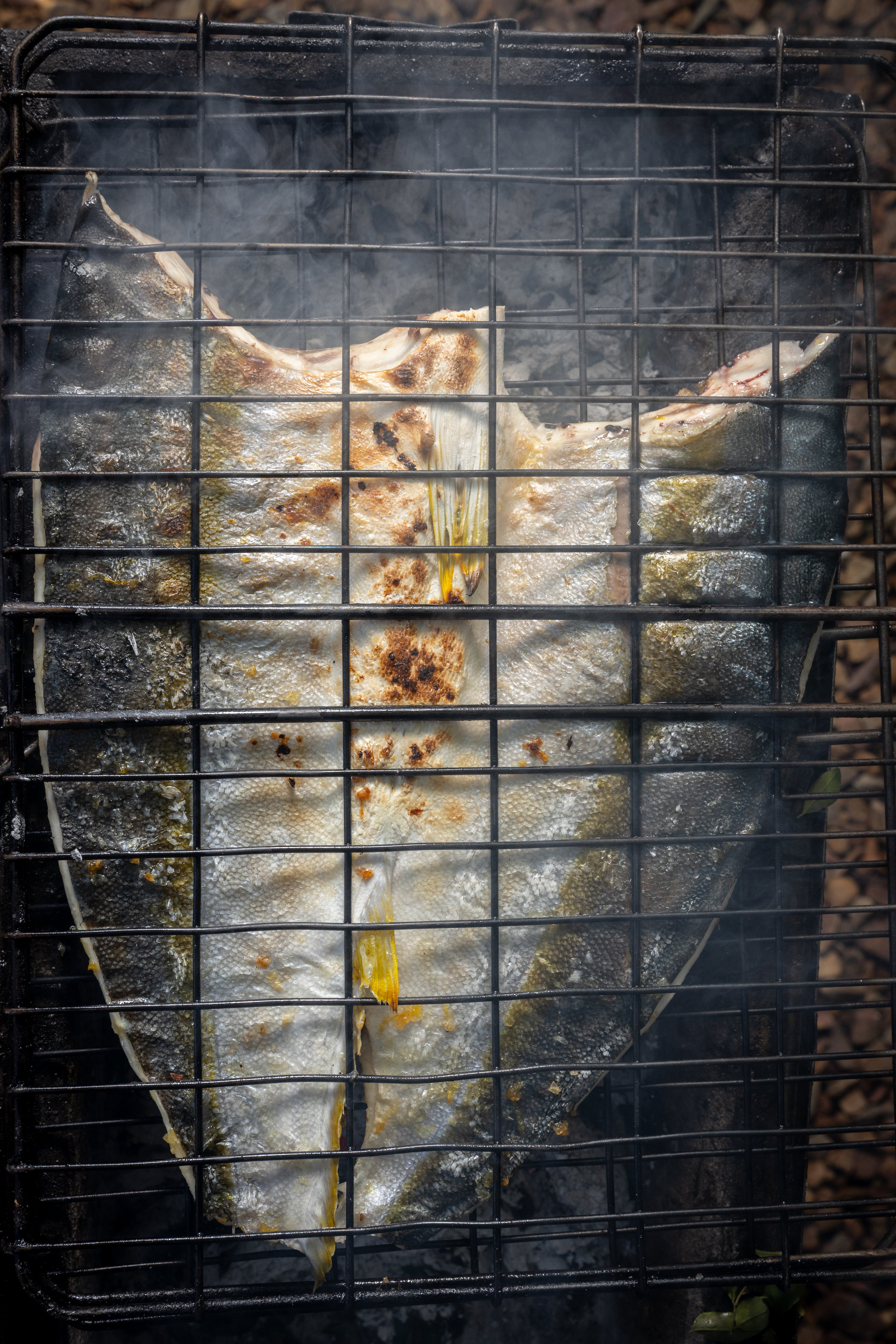
What does it take to be named Restaurant of the Year? Those words conjure a certain set of expectations: a beautiful setting, warm hospitality, knowledgeable staff, a focus on seasonality and sustainability and, obviously, perfectly delicious food.
You’d expect all these things as the minimum, plus a little something extra that makes it special. Salsify nails every one of them, and then some. It has that extra something – a chef at the helm who couldn’t hide his passion if he tried.
Though it sounds like a cliché, chef Ryan Cole of Salsify – pronounced “sal-si-fee”, not “fie”, as I kept blurting out – genuinely lives and breathes his work. Whether it’s fishing several times a week with his brother to supply the restaurant (their dad was a commercial fisherman), foraging for indigenous ingredients that “tell the South African story,” sourcing sustainable produce or, you know, running two lauded businesses (the other is COY, a more laid-back but nonetheless excellent destination), it’s clear he means it when he says, “there was never anything else”.
Salsify is housed in The Roundhouse – a national monument dating back to 1786, which served first as a guardhouse and then a hunting lodge. Perched at the base of Cape Town’s Table Mountain, with sweeping views of the Atlantic, it’s a setting that does a lot of the talking. But Ryan insists Salsify is “about a sense of time and place”. “It’s an experience, a longer journey – put your seatbelt on and trust us.”
From the hand-washing ceremony (my palms had never felt so soft or smelled so good) to the welcome mountain-sage cocktail served in the preservation chamber – apple-y fresh and delivered in a room daubed with graffiti by Louis de Villiers aka Skullboy – Salsify is full of sensory surprises without ever tipping into excess.
A desire to be “ingredient-led” means there’s nowhere to hide. Ryan says he’d “prefer taking off a plate, opposed to adding to,” and as he told the 2025 Eat Out Awards after winning: “We stand for a few things: no bulls**t, honesty and flavour.”
That ethos translates into exquisite, understated dishes – some dictated by what’s been caught that day.
A parsnip and chicken skin tart is smoky, delicate and absurdly tasty; its texture almost as appealing as its flavour. Springbok tartare, dressed with a lightly spicy Asian influence, is impossibly tender, offset by teensy pieces of popcorn. Steamed pork jowl sounds intimidating, but it couldn’t be softer; its crunchy topping is delightfully reminiscent of pub pork scratchings.
Ryan knows how to keep guests happy from the outset – with a 12-hour sourdough and milk-stout butter dusted with lemon, served alongside a small glass of stout – and right to the end, with the Salsify chocolate bar, best described as a fatter, denser, fudgier Twix.
Something that adds to the experience – particularly for visitors – is the abundance of new things you’ll get to try. In just one (admittedly sizeable) meal, I tasted spekboom on an oyster; umfino, made from pap (a maize dish that’s a staple in any Cape Townian’s diet) and leafy greens; chokka, a squid found off the South African coast; chakalaka, a spicy vegetable relish; and cake made from the tropical plant pandan – along with many more ingredients you just can’t get in the UK.

This pride in South African food and ingredients isn’t unique to Salsify. At De Tafel at the Palm House Hotel and Spa – a gorgeous place to stay that exemplifies South African hospitality – the menu “takes its cue from the indigenous flora and flavours of the Cape”. That felt true enough; I recognised fewer ingredients than I didn’t – from kaapse suurings and veld patat to kappertijies, confetti bush and suikerbossie. My palate felt awakened in a way it hadn’t in years. A standout discovery was snoek – a lean, local species of snake mackerel often turned into a smoked pâté that, bizarrely, pairs perfectly with marmalade. It’s also a brilliant way to use up leftovers from the braai – that’s a BBQ, to Brits.
That pride extends to wine too, although it’s something the rest of the world hasn’t quite caught up with yet – as my colleague Hannah Twiggs wrote back in March. Despite its Mediterranean climate, deep-rooted winemaking tradition and truly breathtaking wine regions, South Africa still struggles to shake off its reputation as a budget alternative to the French classics. Wines here are often massively underpriced in British supermarkets – seen as the “cheap option.”
That perception seems to be shifting. Babylonstoren in Stellenbosch – a working farm, winery and luxury hotel – provided the official wine of this year’s RHS Chelsea Flower Show: a 2024 Mourvèdre Rosé. My own top tip, after trying (almost too) many bottles championed by South Africa’s tourism agency, Wesgro, is to look out for SA Chenin Blancs. Crisp, subtly fruity and refreshing, it quickly became my wine of the summer. I particularly loved a bottle from Jordan Wines, but I picked up a brilliant one in Tesco when I got home – yet more proof of the undervalued prices.

Naturally, South African wine features heavily at Salsify, and a Charles Fox 2016 Cœur de Cuvée was one of the most spectacular sparkling wines I’ve tasted. But I must also mention my peruse-the-menu cocktail – a rhubarb cosmopolitan. Tart, sweet and tangy, it’s the kind of drink that would drive Carrie Bradshaw crazy.
Almost as crazy as Ryan is about cooking. He’s only ever wanted to quit once – deathly hungover, he tells me – and if he couldn’t cook, he’d “burn the place down. And by place, I mean the world.”
Luckily for us, he’s still doing his thing – and South Africa is all the better for it.
Since my visit, Salsify was ranked No 88 – on its debut entry – in the World’s 50 Best Restaurants Top 100 list for 2025. Here’s how to braai fish like Ryan, paired with a summery curried salad.
Salsify, The Roundhouse, Roundhouse Road, Camps Bay, 8005, South Africa | +27 21 010 6444 | reservations@salsify.co.za | salsify.co.za
BBQ fish and summer curried salad

Ingredients:
1x 2kg whole fish (preferably sea bass or kingfish)
Zest and juice of 1 lemon
Zest and juice of 1 lime
2 tbsp Maldon sea salt
50g butter, softened to room temperature
1 clove garlic, finely grated
1 apple, juiced
1 carrot, juiced
1 tsp medium curry powder
40ml olive oil
30ml apple cider vinegar
100ml Greek yoghurt
1 head butter lettuce, leaves picked
1 tub ricotta
1 pomegranate
30g salted roasted cashew nuts
1 cucumber, peeled into ribbons
For the fish:
Ask your fishmonger to butterfly your fish and remove the head, leaving the collar on and the belly whole.
Method:
1. Light a fire and allow the coals to burn down to embers. Season your fish with the zest and juice of both the lemon and lime, 1 tablespoon of Maldon salt and a good crack of white pepper. Place the fish skin side down on the grid over the coals. Cook for 4-6 minutes, then flip onto the other side and cook for 1 minute. Allow the fish to rest for 3 minutes, before brushing the soft butter, with one clove of finely grated garlic mixed in, over the flesh.
For the summer curried salad:
2. Mix the carrot and apple juice together in a heatproof pan and place over heat. Reduce the juice by ⅔, then remove from the heat and add curry powder, apple cider vinegar and olive oil. Allow the mixture to cool, then stir through the yoghurt.
3. Add the lettuce, pomegranate, cucumber and cashew nuts to a bowl. Toss together with the yoghurt mix and ricotta. Serve alongside your fish.
Is a Michelin-level burger worth it? Heard in Borough makes its case
Why Glasgow’s food scene made me question living in London
Is this Sussex’s finest dining experience? A night at The Pass
A new opening in Cambridge that’s worth the trip for the lamb alone
Michelin-level burgers? Heard in Borough is betting on it – and wine pairings
One star, two restaurants: is Michelin still worth it at £500 or £60 a meal?







